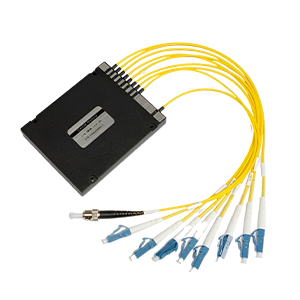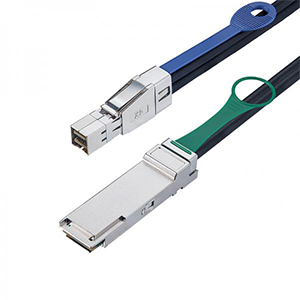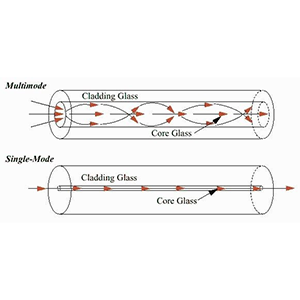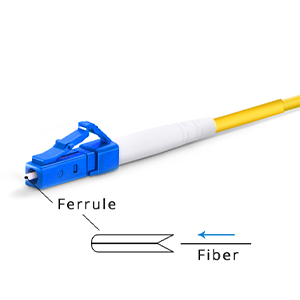In this article, I will introduce you to the basic principles of Dense Wavelength Division Multiplexing (DWDM) technology and its application in the communication field. By gaining an in-depth understanding of the principles and advantages of DWDM, you will better understand and appreciate the importance of DWDM in meeting modern communication and data transmission needs.
Basic principles of DWDM:
DWDM (Dense Wavelength Division Multiplexing) is an optical fiber communication technology that increases the capacity of optical fiber transmission by transmitting multiple optical signals of different wavelengths simultaneously. The basic principles of DWDM can be summarized as follows:
-
Wavelength separation: DWDM systems use optical signals with different wavelengths for transmission. Each wavelength corresponds to an independent communication channel, which is called the channel of the optical signal. These wavelengths can be selected within the visible and infrared spectral ranges, typically between 1525 nanometers and 1610 nanometers.
-
Generation of optical signals: In DWDM systems, lasers are used to generate optical signals with different wavelengths. The optical signals of each wavelength are independent of each other and can represent different data streams or communication channels.
-
Multiplexing of optical signals: In the DWDM system, optical signals of multiple wavelengths are combined into one optical fiber for transmission through a multiplexer. A multiplexer combines optical signals of different wavelengths into a composite optical signal so that multiple channels of data can be transmitted simultaneously to the same optical fiber.
-
Transmission and separation of optical signals: Composite optical signals are transmitted through optical fibers. At the receiving end, a demultiplexer is used to separate the composite optical signal into optical signals of different wavelengths and send them to their respective receivers for decoding and processing. The demultiplexer separates optical signals according to the specific wavelength of each wavelength to ensure that optical signals of different wavelengths do not interfere with each other.
Through the above principles, DWDM realizes the simultaneous transmission of optical signals of multiple wavelengths in the optical fiber, maintains the independence between wavelengths, and avoids interference between signals. This technology greatly increases the capacity of optical fiber transmission, enables high-speed, large-capacity data transmission, and meets the bandwidth requirements of modern communication networks.
Components and functions of DWDM system:
A DWDM system consists of multiple components, each of which plays a key role to achieve the multiplexing and transmission of multi-wavelength optical signals. The following are the main components of a DWDM system and their functions:
-
Wavelength division multiplexer (MUX, Multiplexer): A wavelength division multiplexer combines multiple optical signals of different wavelengths into a composite optical signal. It can distribute optical signals from different light sources to different channels and send them into the same optical fiber for transmission. Wavelength division multiplexers typically use grating or optical waveguide structures with multiple input ports and one output port.
-
Wavelength demultiplexer (DEMUX, Demultiplexer): Wavelength demultiplexer decomposes composite optical signals and decouples optical signals of different wavelengths from optical fibers. It can separate each wavelength in the composite optical signal and send them to the corresponding receiver for decoding and processing. Wavelength division multiplexers are generally similar in structure to wavelength division multiplexers, but have opposite functions.
-
Optical amplifier: Optical amplifier plays a key role in the DWDM system and is used to enhance the intensity of the optical signal. In long-distance transmission, optical signals will gradually weaken due to the attenuation of optical fiber transmission. Optical amplifiers can amplify optical signals and compensate for losses during transmission, so that the signals can remain stable over longer distances. Commonly used optical amplifiers include fiber amplifiers (such as EDFA) and semiconductor optical amplifiers (such as SOA).
-
Optical filter: Optical filter is used to select specific wavelengths and filter out optical signals of other wavelengths. It helps ensure that the wavelengths of each channel do not interfere with each other. Optical filters can be configured as needed to select specific wavelength ranges.
-
Optical monitor: Optical monitor is used to monitor the power and quality of optical signals. It can detect problems such as distortion, attenuation and noise in optical signals and provide feedback information for system adjustment and optimization.
In addition to the above components, the DWDM system also includes other auxiliary equipment, such as fiber optic connectors, fiber optic attenuators, fiber optic couplers, etc., in order to realize the connection, adjustment and optimization of optical signals.
These components work together to enable the DWDM system to multiplex, transmit and demultiplex optical signals of multiple wavelengths, thereby providing high-capacity, high-bandwidth optical fiber communications.
The process of multiplexing and demultiplexing of optical signals:
The multiplexing and demultiplexing of optical signals is a key process in the DWDM system, allowing optical signals of multiple wavelengths to be transmitted simultaneously in the optical fiber and processed independently at the destination. The following is a detailed description of the multiplexing and demultiplexing process of optical signals:
The multiplexing process of optical signals:
-
Input optical signal: Multiple optical signals with different wavelengths are sent to the DWDM system as input.
-
Wavelength division multiplexer (MUX): At the transmitting end of the DWDM system, the input optical signal passes through the wavelength division multiplexer. A wavelength division multiplexer combines these optical signals of different wavelengths into one optical fiber to form a composite optical signal. A wavelength division multiplexer distributes the optical signals of each wavelength into different channels to ensure that they are independent of each other.
-
Composite optical signal transmission: Composite optical signals are transmitted through optical fibers. During the transmission process, optical signals of different wavelengths are transmitted in parallel in the optical fiber without interfering with each other.
Demultiplexing process of optical signals:
-
Composite optical signal reception: At the receiving end of the DWDM system, the composite optical signal is received.
-
Wave decomposition multiplexer (DEMUX): The received composite optical signal passes through the wave decomposition multiplexer. A wavelength demultiplexer decomposes a composite optical signal into optical signals of different wavelengths based on the specific wavelength of each channel.
-
Wavelength separation: The demultiplexed optical signal is separated, and each wavelength corresponds to a channel. These wavelength-separated optical signals can be independently transmitted to the corresponding receiver for subsequent decoding, processing, and transmission.
Through the process of multiplexing and demultiplexing, the DWDM system realizes the simultaneous transmission of optical signals of multiple wavelengths in the optical fiber, and separates them into independent optical signals of each wavelength at the destination. This can achieve efficient, high-capacity optical fiber transmission and meet the bandwidth requirements of modern communication networks.
Advantages and applications of DWDM:
DWDM (Dense Wavelength Division Multiplexing) has many advantages, making it widely used in the communication field. The following are the main advantages and applications of DWDM:
-
High-bandwidth transmission capability: DWDM technology effectively increases the capacity of optical fiber transmission by transmitting optical signals of multiple wavelengths simultaneously. It can achieve high-speed transmission from several Gb/s to several Tb/s for each channel, meeting the large bandwidth requirements of modern communications and data transmission.
-
Long-distance transmission: Due to the use of optical amplifiers to enhance the intensity of optical signals, the DWDM system can achieve long-distance transmission in optical fiber networks and reduce signal attenuation and distortion. This makes DWDM suitable for transmission needs across a wide range of geographical areas, including across continents, countries and cities.
-
Optical spectrum efficiency: DWDM technology can simultaneously transmit optical signals of multiple wavelengths in optical fibers, making full use of optical spectrum resources. It provides efficient spectrum utilization, allowing fiber optic networks to carry more data traffic, thereby improving overall network efficiency.
-
Flexibility and scalability: DWDM systems can increase or decrease the number of channels as needed to adapt to growing bandwidth requirements. It is flexible and scalable, allowing for easy network upgrades and expansion without the need to replace the infrastructure.
-
Multi-protocol support: DWDM technology can support multiple communication protocols, including Ethernet, Fiber Channel (Fibre Channel), SDH/SONET, etc. This allows DWDM to be widely used in different communication fields, such as optical communications, data center interconnection, wide area networks, etc.
-
Maximize the utilization of optical fiber resources: DWDM technology can simultaneously transmit optical signals of multiple wavelengths in one optical fiber, thereby maximizing the utilization of optical fiber resources. This reduces the cost of fiber deployment and maintenance and improves the economic benefits of fiber optic networks.
Based on the above advantages, DWDM technology is widely used in various communication scenarios, including transnational communications, data center interconnection, metropolitan area networks, wide area networks, etc. It provides efficient and reliable solutions for large-scale data transmission, high-speed interconnection and network expansion.
Summary:
Thank you for reading this blog. We focus on the basic principles of Dense Wavelength Division Multiplexing (DWDM) technology and its application in the communications field. By transmitting optical signals of multiple wavelengths simultaneously, DWDM technology significantly increases the capacity of optical fiber transmission, providing high-bandwidth solutions for modern communication and data transmission needs.
When you choose our products, you will receive advanced DWDM solution support, and we are committed to providing high-quality products and services to meet your communication needs.
DWDM FAQ
DWDM technology enables the transmission of multiple optical signals simultaneously over a single optical fiber by using different wavelengths of light. It works by combining and transmitting these wavelengths together, allowing for increased data capacity and efficient utilization of the fiber.
In a DWDM network, multiple optical signals from different sources are combined using multiplexers onto a single optical fiber. At the receiving end, demultiplexers separate the combined signals into their respective wavelengths, which are then directed to their intended destinations. This allows for high-speed, long-distance communication with minimal signal degradation.
DWDM stands for Dense Wavelength Division Multiplexing. It is an optical communication technology that enables the transmission of multiple signals simultaneously over a single optical fiber by utilizing different wavelengths of light. DWDM systems use lasers to generate these wavelengths, and multiplexers and demultiplexers to combine and separate the signals.
The five main components of a DWDM system are:
1.Transmitters: These are laser sources that generate optical signals at different wavelengths.
2.Multiplexers: They combine multiple optical signals onto a single fiber by assigning different wavelengths to each signal.
3.Fiber optic cables: These transmit the combined signals over long distances.
4.Demultiplexers: They separate the combined signals into their respective wavelengths for further processing.
5.Receivers: These receive and interpret the demultiplexed signals for their intended destinations.
DWDM primarily operates in the single mode fiber (SMF) environment. Single mode fibers provide a higher transmission performance and longer distances compared to multimode fibers, making them more suitable for DWDM applications.
DWDM operates across a wide range of wavelengths in the C-band (conventional band) and L-band (longer wavelength band). The wavelengths commonly used in DWDM systems fall within the range of 1525 nm to 1610 nm, with channel spacing typically at 0.8 nm or 0.4 nm intervals.
Please note that DWDM technology and implementation can have variations depending on specific system designs and requirements.





